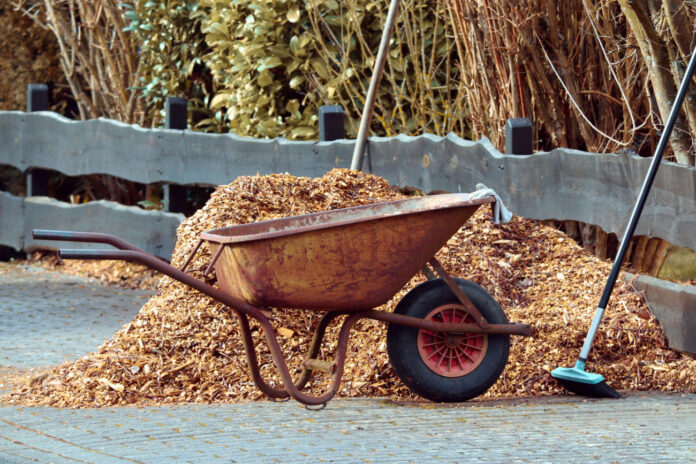Even though we are seriously aware of conserving moisture, slowing flood waters, reducing pesticide use, having healthier plants, smothering weeds, saving money, recycling materials, — and on and on, we still have not yet discovered all the benefits of mulching. We have discovered that mulches can help us and our plants make it through the hot, dry times ahead — BUT, mulching IS about SAVING. Saving plant life, chemical use, money, the environment, and labor, FOR NOW AND FOREVER!!!!
What is mulch?
Organic mulch consists of dead leaves, twigs, fallen branches and other plant debris which accumulate on the earth’s surface. These organic mulches not only conserve moisture, they also feed plants, earth worms, microbes and other beneficial soil life. As microbes digest organic materials they give off a sticky substance that glues soil particles into a crumb-like structure. This crumb-like soil structure allows water to soak in better. Water that soaks in is held on the soil for future plant use.
What Does Mulch Accomplish?
Mulch insulates and protects soil from drying caused by evaporation of water from soil exposed to hot sun and winds. Mulches break the force of rain and irrigation water thereby preventing erosion, soil compaction and crusting. Mulched soils absorb water faster. Mulches prevent splashing of mud and certain plant disease organisms onto plants and flowers during rain or overhead irrigation. The mulch stops light from reaching the soil and thereby prevents germination of many weed seeds. Fewer weeds provide less competition for available moisture and nutrients. Using mulches to control weeds is safer than applying herbicides and safer that cultivating which can damage tender, newly formed roots. Mulches also add attractive features to landscape.
Management of Mulch
Apply mulch in a layer 2 to 6 inches thick. Layer thickness depends on mulch material, e.g., coarser mulches are applied more thickly. Four inches of loose fibrous materials works well around trees and shrubs. Thick layers of very fine material block air to the roots of plants. In their search for air, roots will grow up into mulch, which can be harmful to plants.
Organic mulches should be added regularly to maintain the desired layer thickness. Shredded branches and large two-inch bark pieces are considered a fibrous or loose mulch. Leaves or leaves mixed with some grass clippings and one-inch size bark would be a medium mulch. When using medium mulch, the layer should be about two inches thick. One-half inch and smaller materials, such as fine-screened and double-ground bark, should only be one inch thick.
When piled too thickly, these tiny particles can quickly settle together and prevent air and water from penetrating into the soil. The finer, smaller materials should be used around small flowers and vegetables.
When applying mulch around plants, cover the entire area of soil containing roots, but keep the mulch away from the base of the plant. Mounding the mulch around the base of the plant, as many people think looks so fine, can lead to its death.




